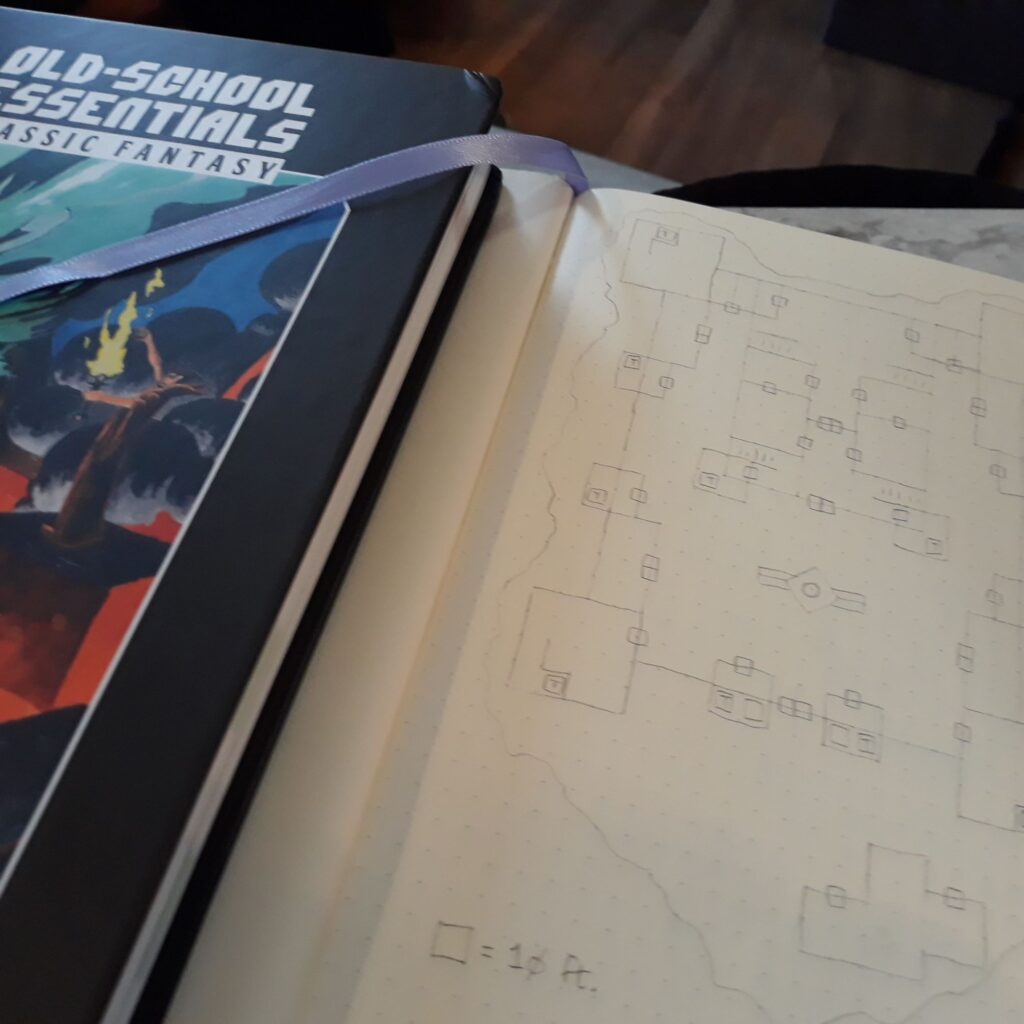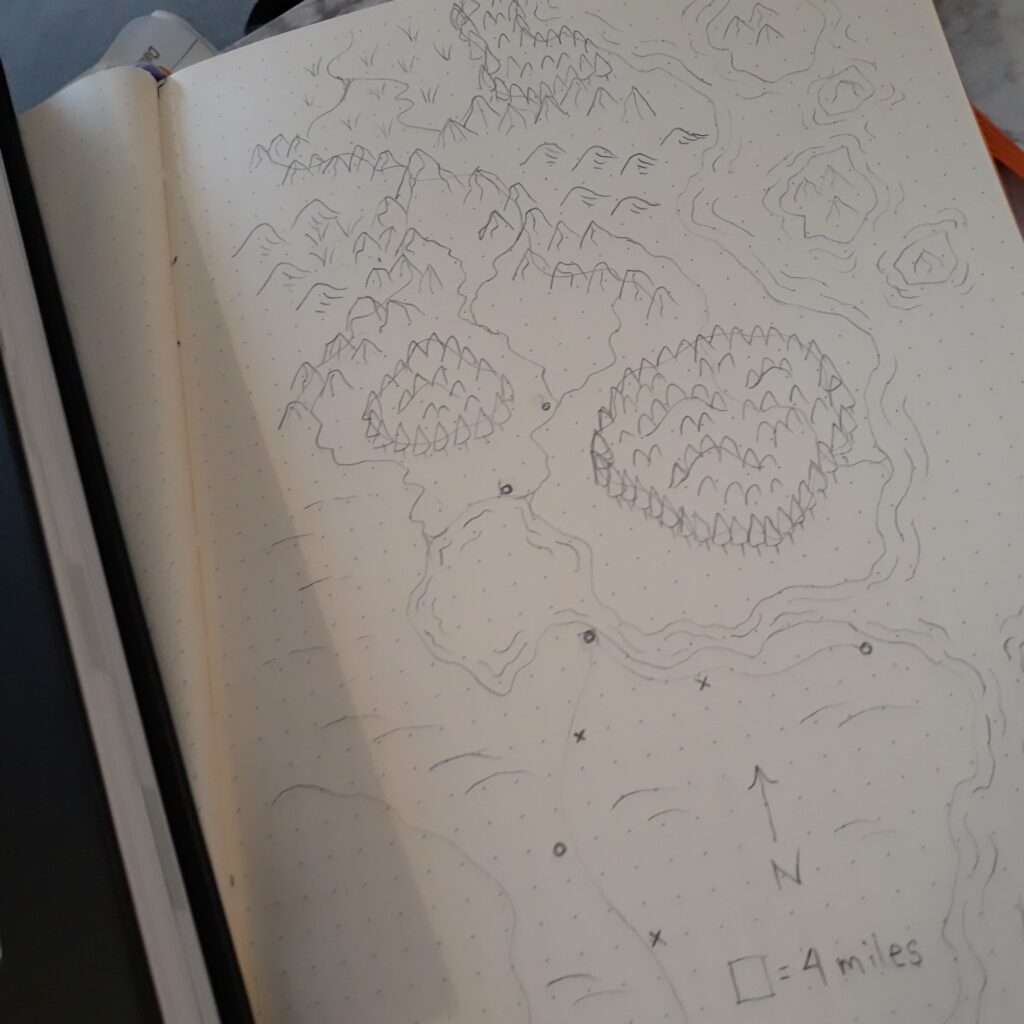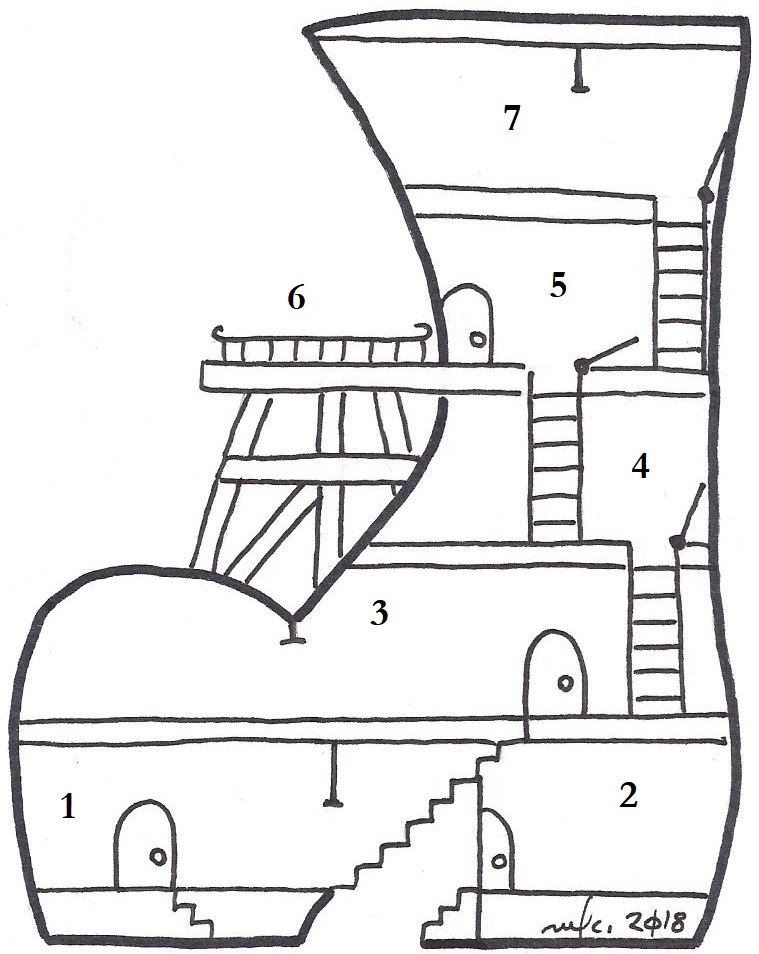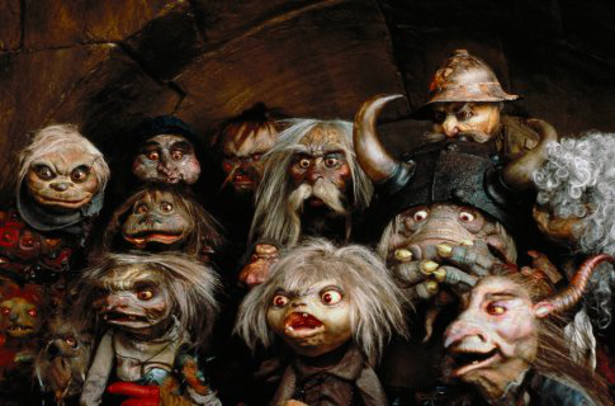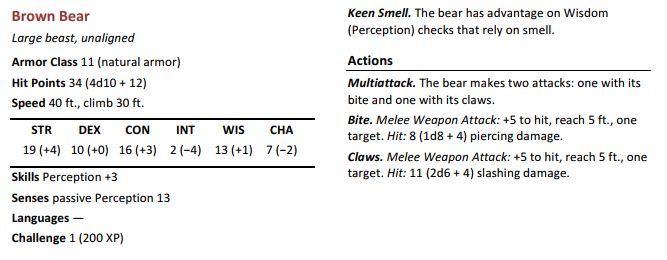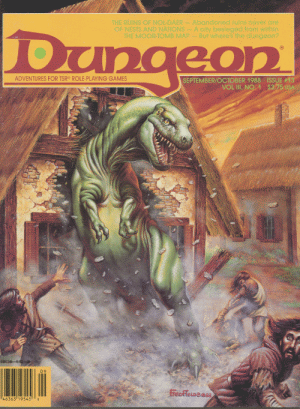
I used to have several issues of Dungeon from the late 80s to early 90s. I don’t have all of them now, but I do still have the issue the cover of which you see to the right. In it, one finds a fun little adventure by Jon Bailey titled “The Moor-Tombs Map”. It’s written for AD&D, specifically for 4-6 characters of 2nd to 4th level. Let’s take the middle road through those two ranges and assume 5 characters, all of which are 3rd level.
Now let’s shift gears as I think out loud (so to speak). In 5E D&D, the DM creates a combat encounter by first determining the adventuring party’s “XP Threshold” (DMG 82). Our party of five 3rd-level characters would look like this:
Easy 375 XP, Medium 750 XP, Hard 1,125 XP, Deadly 2,000 XP
Back to “The Moor-Tombs Map”. Not to give too much about it away, but the first combat encounter encountered on the road away from Moorwall is with a wolfwere and six wolves. A quick-and-dirty estimate of the wolfwere’s CR in 5E? It’s AC 3 (or 17 in 5E), has 5 Hit Dice, can attack twice per round for 2-12 plus weapon, has a magical song that causes slow, cannot be harmed by weapons unless they are magic or cold iron, and has magic resistance. A 5-HD monster had a THAC0 of 15, which is roughly equivalent to a +5 attack bonus.
For 5E, that’s a great AC, but pretty low hit points. It’s got good damage, however. Assume a d8 for weapon damage, and that’s 7 plus 4, or 11 on average. AD&D didn’t have save DCs, so fixing the save DC for its slow is a matter of taste. As an estimate, if I were building a 5E wolfwere using these stats, I’d aim for CR 3 (700 XP). Six wolves come in at 300 XP total. An encounter with seven monsters has an encounter multiplier of 2.5. The XP threshold total for the wolfwere and its wolves comes in at 2,500 XP. That’s a potentially deadly encounter for our adventurers.
Later on, the adventurers encounter 10 giant vultures (threshold 4,500 XP), 6 lizard men (threshold 1,200 XP), as well as a few other encounters, and this is all before reaching the actual moor-tomb.
Obviously, the differences between AD&D and 5E D&D make running an AD&D adventure as-is tricky. It’d be a real bummer if less than half way to the actual adventure one or more of the adventurers died in combat against what is pretty much a random encounter. 1E and 5E are not the same game. They have different assumptions, different maths, et cetera.
Let’s consider in more detail those half-dozen lizard men. As DM, I don’t really want to subject my players’ characters to a hard encounter that is at best tangetial to the main story. I could just remove the encounter, but that takes away from some of the “local color” of the adventure. The players could evade the lizard men or convince them to not attack, but if things go sideways the resulting fight could go badly for the adventurers. I could reduce the number of lizard men, of course. Halving the number drops the threshold XP to 600, making it a much more manageable threat, but I also like fights that involve larger numbers of enemies. That was a feature of AD&D that I miss.
What to do?
Well, instead of using bears (see previous post), I could use kobolds. I take the standard kobold, change its size to Medium, its Hit Points to 7 (2d8-2), and add a swim speed as per lizardfolk. Voila! My newer, weaker lizard men are now a threshold 300 XP encounter. That ought to be a cake walk for the adventurers. It also establishes in my game world that there are levels of lizard men. Sure, today you bumped into a group of lowly hunter-gatherers, but tomorrow you might run afoul of young warriors (goblins as lizard men) supervised by a more experienced fighter (a standard lizardfolk).
Just using bears is an idea with wide-ranging utility that can help a DM come up with new monsters or variations of old monsters almost on-the-fly.
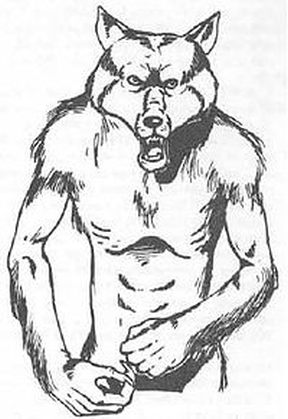
“Inhabiting out of the way places, the hated and feared wolfwere is the bane of humans and demihumans alike, for it is able to take the form of a human male or female of considerable charisma. In either its true shape or that of a man, the wolfwere slyly hunts, slays, and devours its favored prey — men, halflings, elves, etc. … It must be noted that a great enmity exists between wolfwere and werewolves.” (Monster Manual II, p. 127)
Wolfwere
Medium fey (shapechanger), chaotic evil
Armor Class 17 (natural armor)
Hit Points 27 (5d8+5)
Speed 40 ft.
Ability Scores STR 16 (+3), DEX 18 (+4), CON 13 (+1), INT 14 (+2), WIS 14 (+2), CHA 17 (+3)
Skills Deception +5, Perception +4
Tools musical instrument
Damage Immunities bludgeoning, piercing, and slashing from nonmagical attacks not made with iron weapons
Senses darkvision 60 ft., passive Perception 14
Languages Common,Sylvan, Worg
Challenge 3 (700 XP)
Keen Hearing and Smell. The wolfwere has advantage on Wisdom (Perception) checks that rely on hearing or smell.
Magic Resistance. The wolfwere has advantage on saving throws against spells and other magical effects.
Shapechanger. The wolfwere can use its action to polymorph into a human or back into its true form of a human-wolf hybrid. Its statistics are the same for either form. Any equipment it is wearing or carrying isn’t transformed. It reverts to its true form if it dies.
Wolvesbane Sensitivity. If the wolfwere starts its turn within 15 feet of wolvesbane, it is poisoned and thus has disadvantage on attack rolls and ability checks.
Actions
Multiattack. The wolfwere makes two attacks in its hybrid form: one with its bite, the other with a weapon. In human form, the wolfwere makes one attack with its weapon.
Bite. Melee Attack: +6 to hit, reach 5 ft., one target. Hit: 7 (1d6+4) piercing damage.
Sword. Melee Attack: +6 to hit, reach 5 ft., one target. Hit: 7 (1d6+4) piercing damage.
Call of the Wild (1/Day). When outdoors, the wolfwere magically calls 2d6 wolves or 1d6 worgs. The called creatures arrive in 1d4 rounds, acting as allies of the wolfwere and obeying its spoken commands. The beasts remain for 1 hour, until the wolfwere dies, or until the wolfwere dismisses them as a bonus action.
Lullaby (1/Day). The wolfwere has a magical song that causes listeners to fall into slumber. A total of 22 (5d8) hit points of humanoid creatures within 90 feet of the wolfwere are affected. Creatures are affected in ascending order of their current hit points (ignoring unconscious creatures), and a Wisdom saving throw against DC 13 negates this power’s effect. Starting with the creature that has the lowest current hit points, each creature affected by this power falls unconscious for 1d4+4 minutes. A sleeping creature remains unconscious until the sleeper takes damage, or until someone uses an action to shake or slap the sleeper awake. Subtract each creature’s hit points from the total before moving on to the creature with the next lowest hit points. A creature’s hit points must be equal to or less than the remaining total for that creature to be affected. Undead and creatures immune to being charmed aren’t affected by this power.
Tags: 5E D&D, adventure design, monsters
